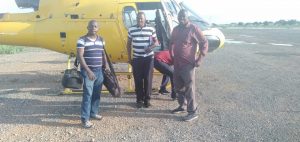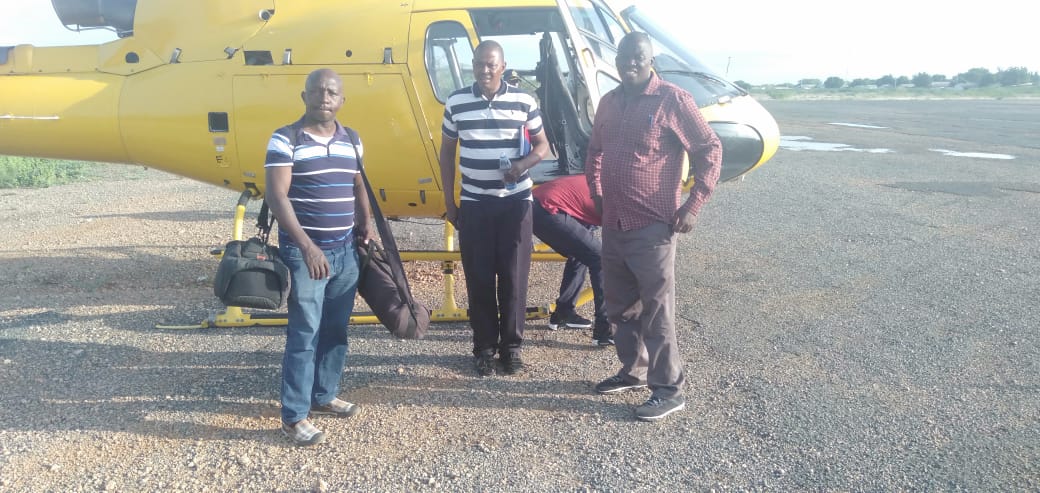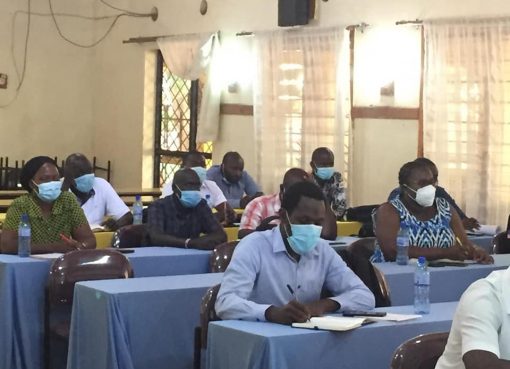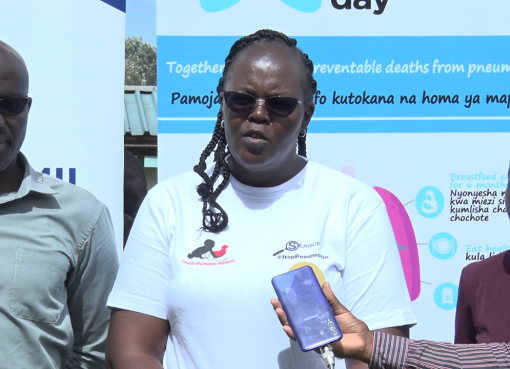Although all government attention, efforts have shifted to how to contain the spread of the dreaded Covid-19, almost similar attention continue to be given to aerial spray to also eliminate the desert locust in the country.
Talking to KNA in Garissa town (Rtd) colonel Julius Ngera from the locust control centre said that the Corona virus restrictions issued by the government are not limiting the locusts control measures.
“All locusts fighting teams have been exempted from the Covid-19 restrictions because the locust menace is equally threatening just like the Corona virus,” Ngera said.
Ngera first scouts for locusts exact location using a helicopter where he collects GPS coordinates on the exact locations and relays the same to captains of fixed wing military planes who are tasked with the aerial spraying.
He said that the centre has 6 bases in Isiolo, Marsabit, Garissa, Wajir, Masinga and Turkana for operational purposes.
“The bases are meant to ensure that the ground activities in terms of coordination with the county government, national government and the community is well enhanced and all activities are controlled from the bases,” he noted.
The bases also carry out surveillance, monitor and conduct ground and aerial spray of the desert locust across the country.
The team is currently in Tana River and Garissa counties where swarms covering about 5 kms square with a population of between 7 and 10 million locusts have been spotted on irrigation farms along the river Tana.
Ngera said that the team will be heading to Wajir and Modogahse (Garissa County) where huge swarms have been spotted by the ground teams.
He said that his team works closely with volunteers who scout all the affected areas to ensure nothing is left to chance.
“The communities affected have really assisted us by providing volunteers who are involved in scouting and tracing locusts breeding areas,” he said.
He also appealed to the community in the affected areas to continue volunteering information whenever they spot the desert locusts.
According to Mohamed Ali Arid Lands Development Focus (ALDEF) programme officer who sponsors the volunteers the worst affected wards in Tana North sub-county are Chewelle, Madogo, Salah, and Hirimani where huge pasture lands and crops on irrigated farms have been destroyed.
Mohamed said that ALDEF has trained 25 volunteers who map out the locust in terms of where they are, breeding grounds and what they have destroyed on individual farms and in the community at large.
The volunteers have been issued with gadgets that they use to relay GPS coordinates to the server where the surveillance team can pick them for aerial sprays.

On his part the county deputy director of agriculture Dennis Makii said that since the desert locusts were first spotted in Garissa county in December last year, the department has been conducting surveillance, spraying and monitoring the trends of the pest.
He thanked the national government in collaboration with FAO for providing enough chemicals and a vehicle to carry out ground spraying and surveillance.
The deputy director expressed optimism that the desert locusts menace will be eradicated within the next 6 months if the current spraying campaign is sustained.
He said the department has trained 20 of its staff members who work closely with the affected communities to assess whether locusts require aerial sprays, motorised spray or hand Knapsack spraying.
Makii urged the affected communities to inform the local administrators whenever they spot locusts for speedy response.
He said the government has provided enough resources in the fight against the desert locusts adding that ground spraying teams have been exempted and are not restricted by the curfew.
By Jacob Songok





